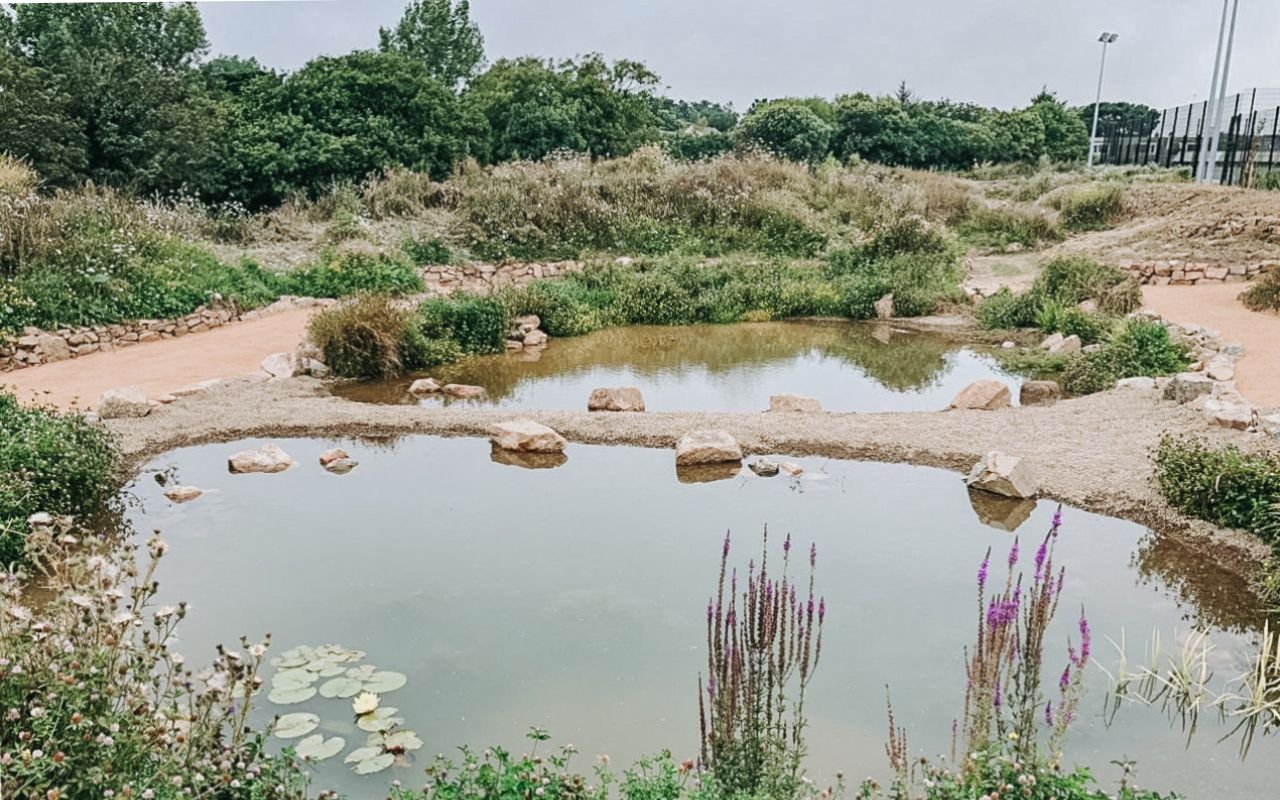Historic Farm Complex - St Ouen
Project Area
Ecology & Habitats
Specialisms
Mitigation/Protection, Environmental Gain, Habitat Creation
Year
2019
Historic farm complex and various out buildings with Planning Permission to develop, with an ecological survey required as a Planning Condition. During surveys, protected bat and bird species were found on site.
Ecological surveys of this farm complex in St Ouen found common pipistrelle and long-eared bats roosting at various locations around the farm complex, using external features such as gaps under fascia boards and one of the voids itself in an outbuilding. Barn swallow nests were also discovered throughout the site. All the above species are protected under the Conservation of Wildlife (Jersey) Law 2000.
As planning permission had already been passed, we had to put forward innovative measures to incorporate the roosting requirements for the bats and birds identified into the consented development, without the need to re-submit any plans. Multiple discussions between the Department of the Environment, Historic Building and Building Control were required to ensure the remits of all Departments were fulfilled.
Our Ecological Survey report and subsequent Species Protection Plan was authorised and passed by the Department of the Environment without any problem.
Shot-term mitigation
To reduce / remove the negative impact to protected wildlife, mitigation measures included erecting alternative bat roosting features around the site, acquiring a Licence under the Conservation of Wildlife (Jersey) Law 2000 to exclude bats from roosts to allow demolition works to continue, limited ecological supervision during the deconstruction of known bat roosts, the delivery of an ecological method statement, etc.
Long-term enhancements
To create nesting and roosting features in the renovated buildings for the long-term use of species known to inhabit the site - these were discussed and designed to fit the buildings and style of the development. This included bat boxes cleverly ‘built-in’ and disguised into the new walls, a ‘bat loft’ with bat access through special tiles (the loft can also be used as a normal storage loft and is not exclusively for bats), fascia board detail to allow bats to use this as an external roosting feature. Barn swallow nest cups were erected at suitable locations in outbuildings and new carport to encourage this species back to these open structures.
Bats and swallows have been seen to return to the site shortly following completion of works, and we will continue to monitor and review the effectiveness of the ecological enhancement measures in liaison with the client. All Planning Conditions relating to ecology have been signed off and approved in full.
_____
The Owner, Peter Mossop, said ‘Nurture Ecology worked with us in a timely and pragmatic way to develop a sensible plan to meet Planning Conditions related to ecology. Paul and Jon clearly appreciate the human realities of a restoration and renovation project such as the one we have undertaken at Homestead. They worked with us to develop and agree a realistic timetable and sensible plans that met the requirements of the Department of the Environment, and our desire for bats & swallows to continue to use the property for nesting. They did this whilst at the same time enabling us to move ahead with renovation and building works. It is a pleasure to see the swallows back in the courtyard this summer and both bats and swallows appear to be using the features that we have incorporated into the building during the renovation which are unobtrusive and blend with the fabric of the building.
Whilst having any Planning Condition imposed on one can be a source of frustration, Nurture Ecology helped us to navigate the best way to meet the DOE requirements sensibly and have also advised us on other things along the way such as indigenous hedgerow replanting. I have no hesitation in recommending them to either assist with planning conditions or more general requirements.’
Highlight Projects

















